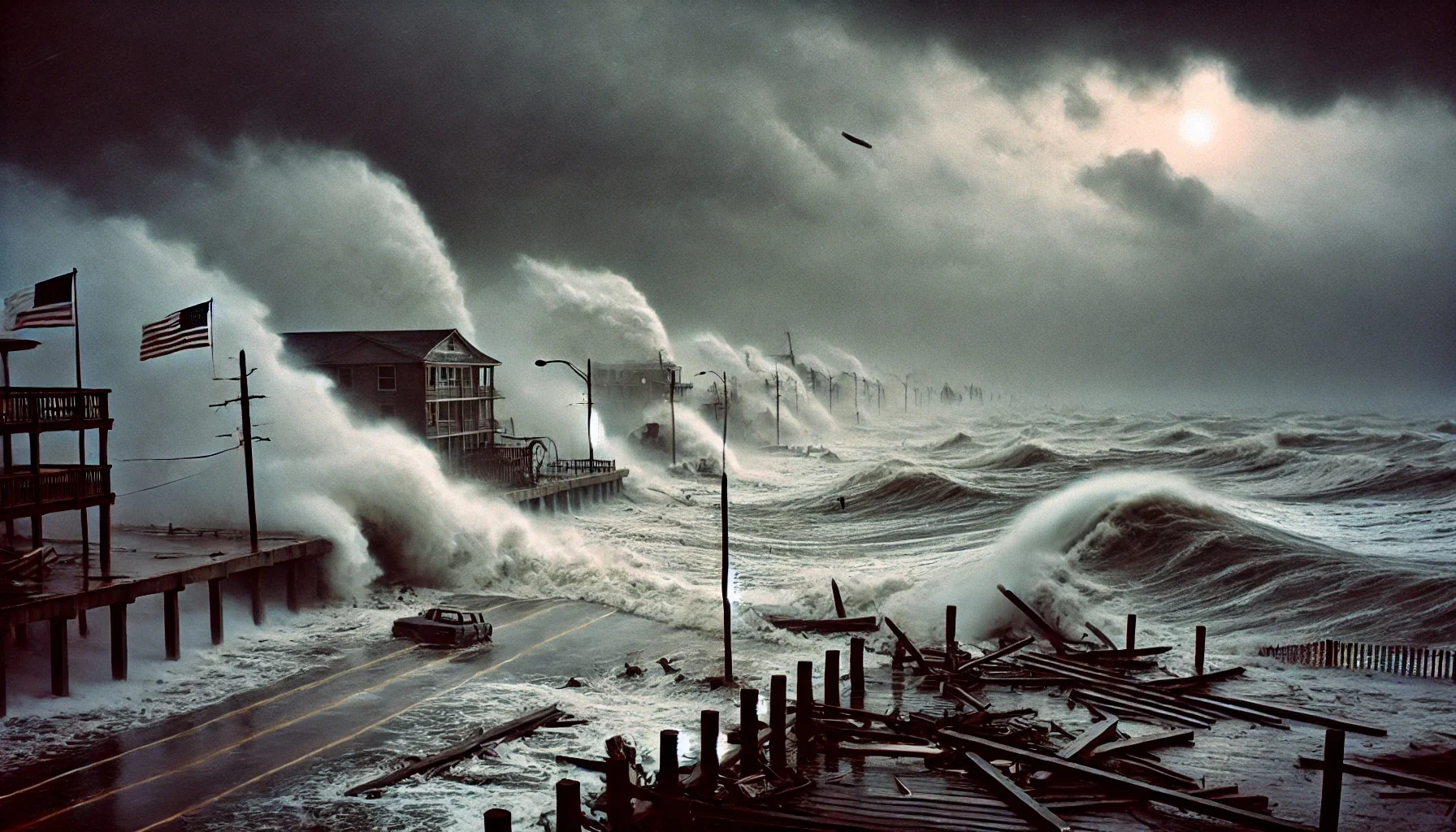
Hurricane Alicia
by: The Calamity Calendar Team
August 18, 1983
On the evening of August 18, 1983, the Texas Gulf Coast braced itself for a force of nature. A tropical wave, which had been a mere blip on the radar days earlier, had morphed into Hurricane Alicia, a powerful Category 3 storm with winds howling at 115 mph. As the storm's eye bore down on Galveston Island, residents knew they were in for a night unlike any other.
A Wave of Trouble
Hurricane Alicia began its journey as a tropical wave, a cluster of thunderstorms moving off the coast of Africa. By August 15, 1983, it had developed into a tropical depression in the Gulf of Mexico. Warm waters and favorable conditions allowed the system to rapidly intensify. By August 16, it had reached tropical storm status and was named Alicia. The Gulf's warm waters fueled its growth, and by the next day, Alicia had achieved hurricane status.
The Storm Unleashed
In the early hours of August 18, Alicia made landfall on Galveston Island, Texas. The impact was immediate and devastating. Fierce winds tore through buildings, uprooted trees, and sent debris flying. Torrential rains inundated streets, turning them into rivers. Galveston, a city with a long history of battling hurricanes, faced one of its most severe tests.
As the morning progressed, Alicia moved inland, targeting Houston. The metropolis, known for its bustling energy sector, saw skyscrapers swaying in the wind, windows shattering, and streets flooding. The storm's fury was relentless, leaving a trail of destruction across southeastern Texas.
The Human Toll
Alicia's rampage resulted in 21 fatalities and left approximately 3,000 people injured. For those who lived through it, the memories of that day are etched in their minds. Tales of heroism emerged as neighbors helped each other amid the chaos. Emergency services and the National Guard sprang into action, rescuing stranded residents and providing much-needed aid.
Economic Devastation
The economic impact of Hurricane Alicia was staggering. The storm caused an estimated $3 billion in damages (1983 USD). The energy sector, vital to Houston's economy, was hit hard. Oil rigs and refineries suffered extensive damage, disrupting production and leading to significant financial losses.
Thanks for subscribing!
Nature's Wrath
The environmental impact of Alicia was also profound. Coastal erosion reshaped the shoreline, and habitats were destroyed. The storm surge flooded estuaries and wetlands, affecting wildlife and ecosystems. The aftermath was a stark reminder of nature's power and the vulnerability of coastal regions.
Lessons Learned
In the wake of Hurricane Alicia, Texas and the nation took stock. The storm underscored the importance of preparedness and response. Improvements in forecasting technology and communication systems were implemented. Building codes were revised to ensure structures could withstand such powerful storms. The Federal Emergency Management Agency (FEMA) coordinated federal aid and disaster relief, setting a precedent for future responses.
The Legacy of Alicia
Today, the story of Hurricane Alicia serves as a cautionary tale and a testament to human resilience. Advances in meteorology have improved our ability to predict and prepare for hurricanes. Ongoing research continues to study Alicia's impacts, providing valuable insights into hurricane behavior and informing future strategies.
Conclusion
Hurricane Alicia was more than a storm; it was a defining moment for Texas. It tested the strength of its people, the resilience of its infrastructure, and the effectiveness of its emergency response. While the memories of that fateful August day remain, so too does the progress made in its aftermath. Alicia's legacy is one of lessons learned and a community's unwavering spirit in the face of nature's fury.
Stay in the Loop!
Become a Calamity Insider and get exclusive Calamity Calendar updates delivered straight to your inbox.
Thanks! You're now subscribed.